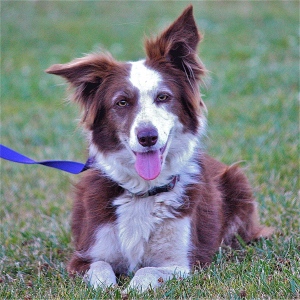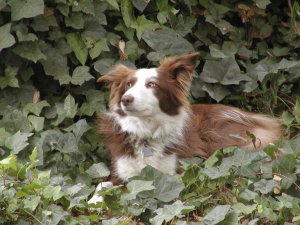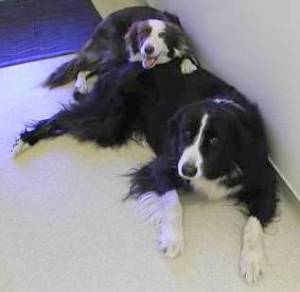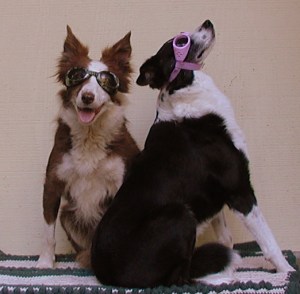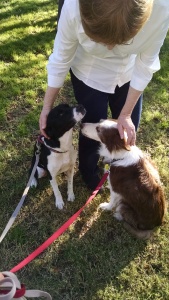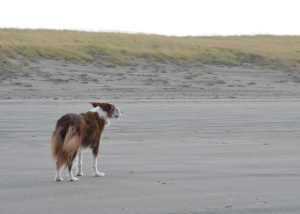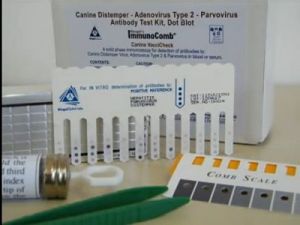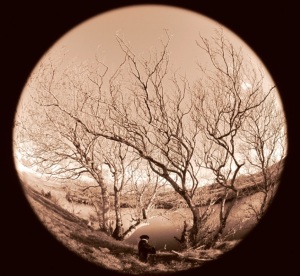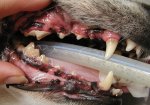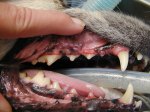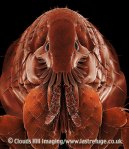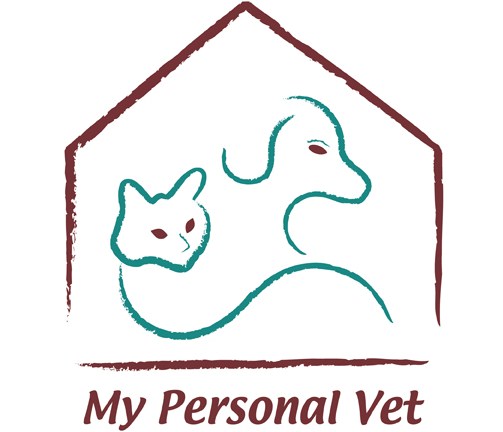I teach and preach about early detection for diseases and problems in dogs and cats – and today I was tested, yet again. FlyGirl is my 9 year old red and white Border Collie. She’s crazy by nature and makes me laugh all the time. If you know FlyGirl, you know nothing stops her. She’ll run until she drops. A few days ago, I saw her left eye tearing a bit.
Early detection
Fly’s eyes get goopy in the morning sometimes but this was pretty runny. Clear fluid, no squinting, no pawing. So I ran through the usual things everyone guesses — probably allergies, or a hair, or dirt from the llama field. Nothing that I could see. She was her usual active, crazy self. That was Tuesday – 3 days ago.
It continued to tear the next day. Hmmm. Now I started to worry a bit. Eyes can go bad in days so they should never be ignored. Should I go to her ophthalmologist? I know she has very bad cataracts in her right eye. A specialist in our area, Dr. Smith, has checked her every 6 months for the last 7 years. But this was her left eye. Warning bells were going off.
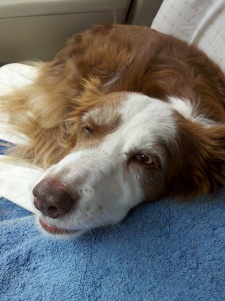
Small squint I fortuitously caught
This morning, her right eye was also weepy. What was going on? Why both eyes? Were her tear ducts blocked? Had she run in the field again and gotten dirt in both eyes? Maybe something was blooming? But then there was ever so slight a squint. That means pain. It was just for a second – a slight lid droop.
So I asked her to look at me and she did – with both eyes wide open and smiling. She was fine. No squinting, pawing, any sign of pain. But I saw her squint again every so slightly about 10 minutes later. Nope, too much and too often.
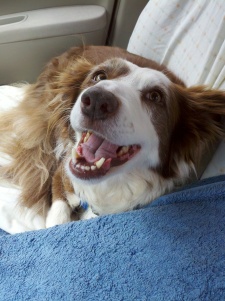
One snap later - No squinting
I called the ophthalmologist’s office immediately and was lucky. They had a spot late afternoon where they could squeeze me in.
What’s wrong?
I always know I’m in good hands at Dr. Gratzek’s office. FlyGirl hopped on the scale when told, followed me down to the room, and sat while Dr. Gratzek looked real closely. Then came the scary part.
“There’s a thorn all the way deep into her cornea.” OK, let’s take it out. Some anesthetic was put in her eye to numb it. But when the doctor tried to remove the thorn, it went deeper. Now I was sweating a little bit.
Since I do bloodwork every year, I was comfortable doing anesthesia. And we had to – this thorn was being slippery and there was a chance it could go further in and drop inside the eye. If that happened, it would need to be taken out by going into the eyeball. Obviously not a good situation. FlyGirl was given a mild sedative and we waited for our turn to come in for anesthesia.
Surgery time
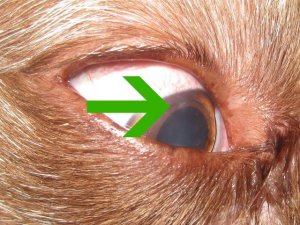
See the inflammation around it?
We spent the time relaxing in the car. I wrote Facebook friends and tried not to think about eyeball surgery and Fly slept unconcerned. When our turn came, she was quiet and calm. Placed on the table, we tried again. The nurse held her eyelids open, I gently held her head, and Dr. Gratzek manned the magnifier and needle.
The needle was used the go into the cornea and lift out the thorn — just like a splinter. Except this dog was awake and it was into her eye! She just stayed calm and still. She did better than I ever do at the eye doctor’s!
TA-DA! It came out! It was then lifted up and out of her eye with tweezers and everyone cheered and high-fived! No surgery, no anesthesia, and complete success! The left eye had a deep scar that indicated it had been scratched a few days before.
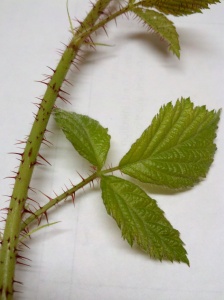
The suspect - Berry thorns
3 lessons for the future
Pay attention to your pup! I’m so glad I jumped the same day I saw the squint. Eyes get bad very quickly and the weekend could have been too long – especially if she rubbed it! As it is she is on an anti-inflammatory and antibiotic in her eye and an oral antibiotic. We are taking no chances with it developing into some of the cases Dr. Gratzek has seen. I will be absolutely rigorous and on time with the doses.
Train for calm handling in any situation! Needles in the eye are certainly not what I train for. But I do train for handling by strangers and sitting still, calm vet hospital manners, and lots of treats and rewards (her favorite is her toy teddy bear). It will also make her treatments a breeze.
Keep your health issues known and in control! I knew her blood showed no problems last time it was tested, her weight is not an issue, and that anesthesia for her was low risk. It can’t always be that way – but knowing the issues and keeping up-to-date makes surprise visits much safer.
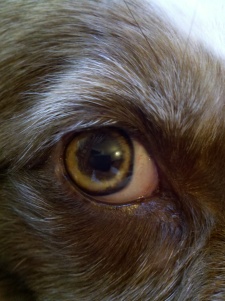
A little red, but all better and beautiful
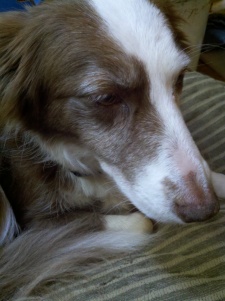
In bed resting and healing for tomorrow's fun
Thank you Dr. Gratzek and Kate!
If you want to see more happy pictures of FlyGirl or other creatures that I love, “Like” me on Facebook at “My Personal Vet”. If you have questions, please ask!

